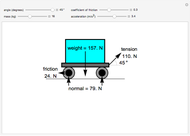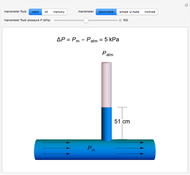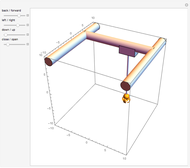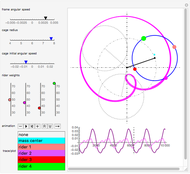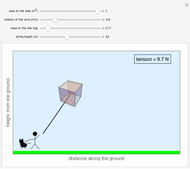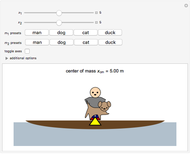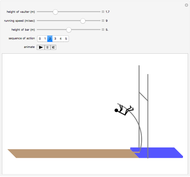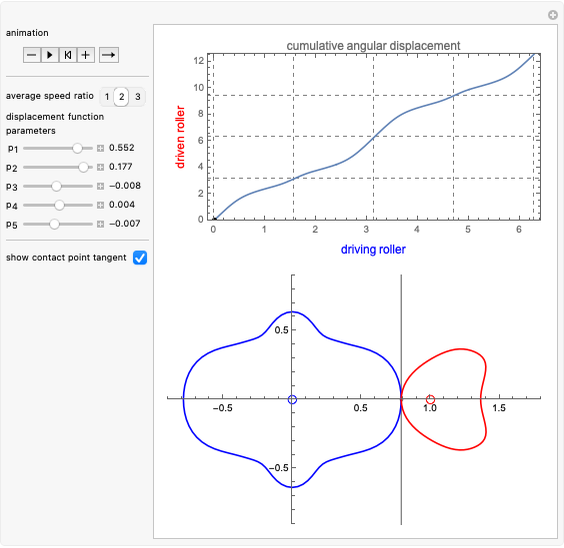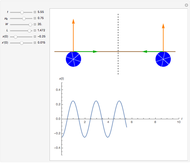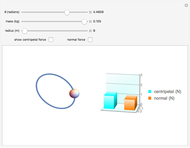Forces on a Roller Coaster

Requires a Wolfram Notebook System
Interact on desktop, mobile and cloud with the free Wolfram Player or other Wolfram Language products.
When an object (such as a roller coaster car) travels at constant speed along a circle, the magnitude of the centripetal force on the car is constant. The normal force (directed toward the center  of the circle) is given by the sum of the centripetal force and the radial component of the weight. Both these forces vary along the loop. This Demonstration shows how these forces change as a function of the position on the circle, the mass of the car, and the radius of the loop. Click the appropriate checkbox to see the centripetal and normal force vectors.
of the circle) is given by the sum of the centripetal force and the radial component of the weight. Both these forces vary along the loop. This Demonstration shows how these forces change as a function of the position on the circle, the mass of the car, and the radius of the loop. Click the appropriate checkbox to see the centripetal and normal force vectors.
Contributed by: Ann Hsieh and Varshini Ramanathan (June 2016)
Based on programs by S. E. McCaslin and Bernard Vuilleumier.
Special thanks to the University of Illinois NetMath Program and the mathematics department at William Fremd High School.
Open content licensed under CC BY-NC-SA
Snapshots
Details
Snapshot 1: the car (shown as a sphere), of mass 0.105 kg, and traveling a loop of radius 9 m, is near 3/4 of the way along its path; since it is almost at the side of the loop, the magnitudes of the centripetal and normal forces are nearly equal
Snapshot 2: the ball, of mass 0.0724 kg, and traveling a loop of radius 9.856 m, is at the top of the loop; there its apparent weight is close to 0; as a result, the ball feels just the centripetal force and almost no normal force
Snapshot 3: the ball, of mass 0.0946 kg, and traveling a loop of radius 10.03 m, is at the bottom of the loop where it feels the greatest normal force
The centripetal force is given by  , where
, where  is the mass of the object,
is the mass of the object,  is the velocity, and
is the velocity, and  is the radius of the circular path. The centripetal force is the same at all points on the circle traveling at a constant speed, and is always directed toward the center of the circle. The force of gravity on the object is given by
is the radius of the circular path. The centripetal force is the same at all points on the circle traveling at a constant speed, and is always directed toward the center of the circle. The force of gravity on the object is given by  , where
, where  is the mass and
is the mass and  is the acceleration due to gravity. The magnitude of this force on the object is also the same at all points on the circle, directed straight down at all points. The normal force is given by
is the acceleration due to gravity. The magnitude of this force on the object is also the same at all points on the circle, directed straight down at all points. The normal force is given by  , directed toward the center of the loop.
, directed toward the center of the loop.
You can vary the angle  at which the mass is located, the mass of the car, and the radius of the loop to see the resulting magnitude of the normal force and how it compares to the constant magnitude of the centripetal force. You can also select the option to show the centripetal force and normal force vectors to see how they change, particularly in relation to one another.
at which the mass is located, the mass of the car, and the radius of the loop to see the resulting magnitude of the normal force and how it compares to the constant magnitude of the centripetal force. You can also select the option to show the centripetal force and normal force vectors to see how they change, particularly in relation to one another.
References
[1] Online Physics Lab. "Vertical Circles and Non-Uniform Circular Motion." (Jun 13, 2016) dev.physicslab.org/document.aspx?doctype=3&filename=oscillatorymotion_verticalcircles.xml.
[2] Regents Prep. "Centripetal Force - The Real Force." (Jun 13, 2016) www.regentsprep.org/regents/physics/phys06/bcentrif/default.htm.
Permanent Citation






